Acacia Tree
- October 25, 2024
- 0 comment
The Acacia tree is a vital component of many ecosystems, known for its remarkable adaptability and ecological contributions. These trees play a significant role in soil conservation, providing habitats for wildlife, and supporting biodiversity. Acacias are commonly found in arid and semi-arid regions, where they often serve as keystone species, meaning they hold together the ecological structure of their environments.
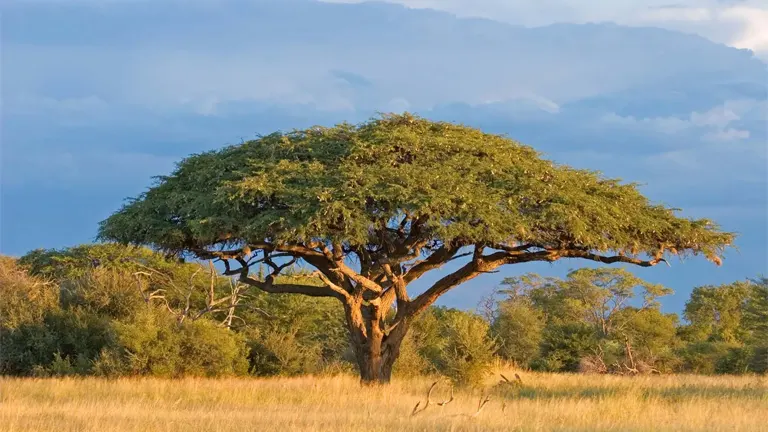
Botanically, the Acacia belongs to the family Fabaceae (or Leguminosae), which is notable for its nitrogen-fixing ability, a trait that enhances soil fertility. With over a thousand species spread across different continents, the Acacia tree holds importance not only ecologically but also culturally, as it has been used by humans for food, medicine, and timber for centuries.
What Is an Acacia Tree?
The Acacia tree (genus: Acacia) belongs to the Fabaceae family, a group that includes legumes such as beans and peas. Acacias are primarily found in tropical and subtropical regions, although they are well-known for thriving in dry, arid environments.
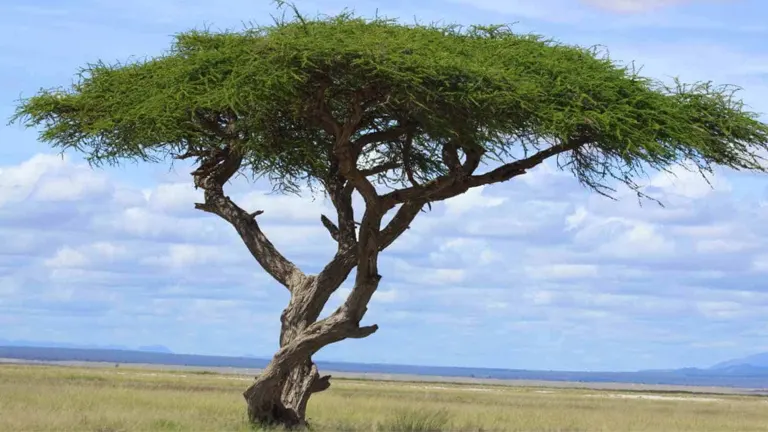
Main Characteristics
- Leaves: The leaves of Acacia trees are either bipinnate or phyllodes. Bipinnate leaves have a feathery appearance, while phyllodes are modified leaf stems that resemble leaves but are much more drought-tolerant.
- Bark: Many Acacia species have rough, thorny bark. The thorns are often a defense mechanism to deter herbivores. Some species, such as the African Acacia tortilis, have long, sharp spines that help protect them from grazing animals.
- Flowers: Acacias are known for their bright yellow or creamy-white spherical flowers, which grow in clusters. These flowers are rich in nectar, attracting pollinators like bees and butterflies.
- Nitrogen Fixation: Acacias are able to fix nitrogen from the atmosphere into the soil, which improves soil health and fertility, particularly in nutrient-poor environments.
Interesting Facts
- Acacias have a symbiotic relationship with nitrogen-fixing bacteria in their root nodules, helping replenish the soil’s nitrogen levels, which is vital for other plant life.
- Many Acacia trees have an impressive lifespan, some living for up to 30–40 years or more, depending on the species and growing conditions.
- Leaves: Most Acacia species have small, compound, pinnate leaves, but some have phyllodes, which are leaf-like flattened stems that serve the same purpose.
- Thorns: A key distinguishing feature of many Acacia species is the presence of sharp thorns or spines, which help protect the tree from herbivores.
- Flowers: Acacia flowers are usually small and arranged in dense clusters. These flowers are often yellow or white and produce a sweet fragrance.
- Bark: The bark is usually dark, rough, and deeply furrowed in older trees, which provides protection in extreme climates.
Ecological Role
Acacia trees play a significant role in maintaining the health of the ecosystems in which they grow. They are often found in dry savannas, deserts, and scrublands, where they are a keystone species. Acacia trees improve soil quality by fixing nitrogen in the soil through a symbiotic relationship with bacteria in their root systems. This nitrogen enrichment helps other plants grow in nutrient-poor soils.
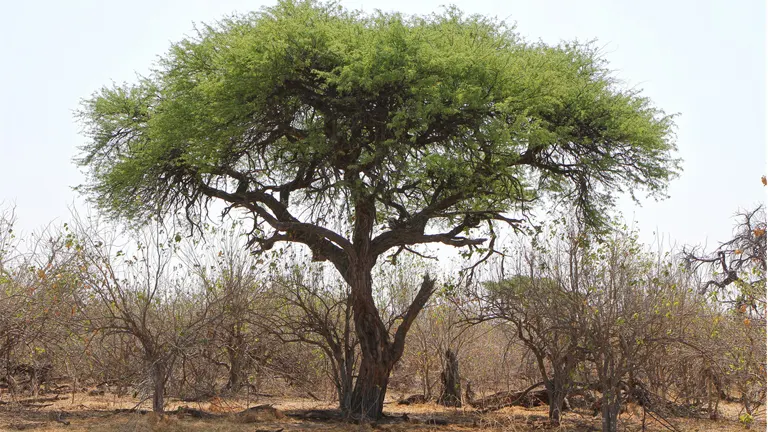
Furthermore, Acacias provide shelter and food for a variety of wildlife. Their leaves, seeds, and flowers are consumed by herbivores such as giraffes, zebras, and antelope. The thorny branches offer protection to smaller animals and birds, creating a vital microhabitat within arid landscapes.
Where Do Acacia Trees Grow?
Acacia trees are highly adaptable and are found across a variety of habitats, ranging from deserts to rainforests. Some of the most common regions where Acacia trees grow include:
- Africa: Large populations of Acacia trees, such as Acacia tortilis and Acacia senegal, are found across the savannas and semi-arid regions of sub-Saharan Africa.
- Australia: Australia is home to hundreds of Acacia species, known locally as wattles, with Acacia pycnantha being the national flower of Australia.
- The Americas: Some Acacia species are found in South America, particularly in tropical and subtropical regions.
Adaptations to Climate
Acacia trees are particularly well-suited to arid and semi-arid climates. Their deep root systems allow them to access water far beneath the surface, while their small, often thorny leaves reduce water loss and deter herbivores. In tropical regions, Acacias can also thrive, especially those with broader leaves adapted for more humid conditions.
Ecological Role
Acacia trees stabilize the soil, preventing erosion, especially in desert areas. Their nitrogen-fixing capabilities enrich the soil, making it more fertile for surrounding plants. In many ecosystems, Acacias also provide critical shelter and food for various animals, from insects to large herbivores.
Uses and Benefits
Acacia trees are widely utilized for their wood, gum, and medicinal properties:
- Timber: The hardwood of many Acacia species is highly durable and resistant to insects, making it valuable for construction, furniture, and tool-making. Acacia koa is particularly prized for fine furniture and musical instruments.
- Gum Arabic: Extracted from Acacia senegal and Acacia seyal, gum arabic is a natural emulsifier used in food products, cosmetics, and pharmaceuticals. It is a key ingredient in soft drinks, candies, and ink production.
- Medicinal Uses: Acacia bark, leaves, and seeds have been used in traditional medicine to treat various ailments, such as infections, digestive issues, and skin conditions.
- Fodder: In arid regions, Acacia leaves and pods serve as an essential source of fodder for livestock during dry seasons.
Different Types Species of Acacia Tree
Acacia Senegal
Known for producing gum arabic, it is found in Africa and the Indian subcontinent.
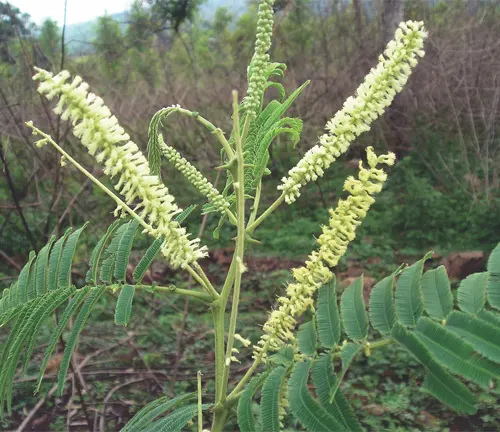

Acacia Nilotica
Common in Africa and India, known for its medicinal properties and tannin-rich bark.
Acacia Tortilis
A savanna species with an umbrella-shaped canopy, adapted to survive in dry conditions.

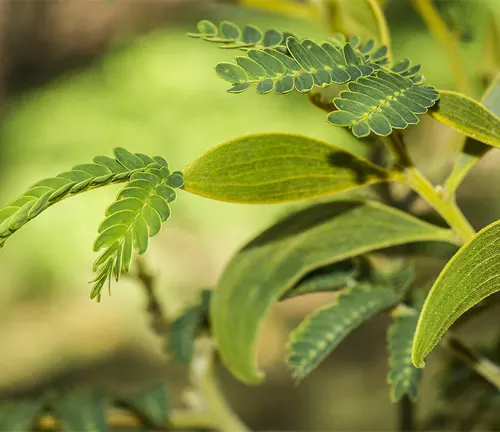
Acacia Koa
Native to Hawaii, valued for its high-quality timber used in furniture and musical instruments.
How to Grow and Care for Acacia Trees
Growing an Acacia tree can be rewarding, as they are relatively low-maintenance and drought-tolerant. Here are some tips for growing them:
- Soil: Acacias prefer well-drained soil, such as sandy or loamy soil. They can tolerate poor soil conditions thanks to their nitrogen-fixing ability.
- Sunlight: These trees thrive in full sunlight. Make sure they receive at least six hours of direct sunlight daily.
- Water: While Acacia trees are drought-tolerant, they still require regular watering, especially when young. Once established, they can survive on minimal water.
- Propagation: Acacias can be propagated from seeds or cuttings. Seeds often require scarification (scratching the seed coat) to aid in germination.
Tree Maintenance
Pruning is important to shape the tree and remove any dead or diseased branches. Watch out for pests like aphids or scale insects, and treat them with appropriate organic or chemical solutions.
Health Benefits of Acacia Tree
The Acacia tree has long been used in traditional medicine, offering several health benefits:

- Digestive Aid: Acacia gum helps soothe the digestive tract and relieve conditions like diarrhea and constipation.
- Wound Healing: The bark and leaves contain anti-inflammatory compounds that aid in healing wounds and infections.
- Respiratory Relief: Acacia extracts are used to treat respiratory conditions such as sore throats and coughs.
Ecological Benefits of Acacia Tree
Acacia trees are invaluable for their ecosystems, offering numerous benefits:
- Soil Fertility: As nitrogen-fixers, they improve soil quality, making them ideal companion plants for other species.
- Erosion Control: Their extensive root systems stabilize the soil, reducing erosion in windy or flood-prone areas.
- Wildlife Habitat: Acacias provide food, shelter, and nesting sites for many species, including birds, insects, and mammals.
Conclusion
The Acacia tree is a cornerstone of biodiversity in many regions, providing essential services such as soil stabilization, nitrogen fixation, and habitats for wildlife. Its ability to thrive in challenging environments highlights its ecological resilience and importance. Conservation efforts aimed at protecting Acacia species are crucial to maintaining healthy ecosystems, particularly in arid regions where they prevent desertification and support local biodiversity.
Frequently Asked Questions (FAQs)
- What is the lifespan of an Acacia tree?
Acacia trees can live for several decades, with some species surviving up to 60 years or more, depending on environmental conditions and threats such as deforestation or disease. - What kind of soil does the Acacia tree prefer?
Acacia trees thrive in well-drained, sandy or rocky soils. They are highly adaptable and can survive in nutrient-poor, arid soils where many other plants struggle to grow. - Are Acacia trees invasive?
Some Acacia species can become invasive when introduced to non-native environments, particularly in tropical and subtropical regions where they can outcompete local plants. - How fast does an Acacia tree grow?
Acacia trees are known for their rapid growth, especially in favorable conditions. Some species can grow up to several feet per year. - Can Acacia trees be used for firewood?
Yes, Acacia wood is commonly used as firewood due to its dense and hard nature, which burns efficiently and produces a lot of heat. - What wildlife depends on Acacia trees?
Acacia trees provide food and shelter for various animals, including giraffes, zebras, elephants, and birds. The trees’ flowers also attract pollinators like bees.


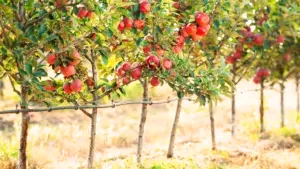

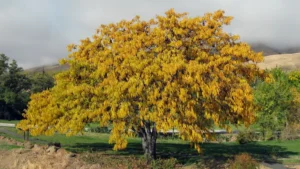



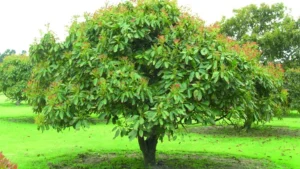



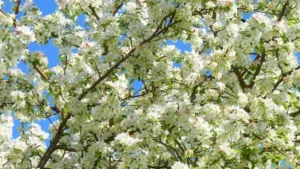

Leave your comment